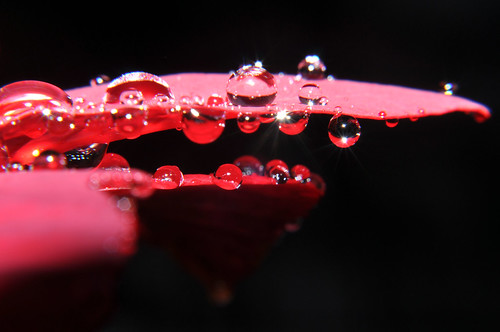One of the many things that often differentiates a photographer from a snap shooter is the use of depth of field. Shallow depth of field is one of the best compositional tools we have, by using out of focus regions in an image we can concentrate the viewers eye on the main subject. Whilst you can get limited depth of field with some kit lenses, to really perfect the art, you need a lens with a wide aperture, f2.8 being an ideal starting point. Of course wide aperture zoom lenses do not come cheap but a better option may be to purchase a prime lens with a wide aperture, for example an 85mm f1.8 would be an excellent addition to anyones kit bag. Prime lens have the advantage of generally being cheaper and having wider apertures.
Note: We have some notes on achieving pleasing shallow depth of field effects with a kit lens here.
When it comes to shooting with a shallow depth of field, there are several things that you need to remember. Firstly the closer you are to the subject, the more shallow the depth of field for a given aperture. Secondly a longer focal length will give a shallower depth of field for a given aperture and subject to camera distance.
So armed with this knowledge, what sort of things can we use depth of field for?
One of the most common uses of shallow depth of field is in portraiture. Usually in a portrait shot, you are trying to bring the viewer’s attention to the eyes. By using a wide aperture you can throw the background completely out of focus, depending on how wide you are and your lens and position, you can also try to throw the subject’s nose out of focus. This is useful if you really want to draw the viewer in to the subject's eyes but it can be hit or miss depending on the subject.
The aforementioned 85mm is often regarded as the best portrait lens because you can get in close to your subject using a wide aperture and the slight compression that an 85mm provides can be very flattering to your subject.
Of course portraiture is not the only area of photography where a shallow depth of field can be a creative tool. Landscape photographers can isolate elements of a scene such as flowers or an individual tree. By getting down low, they can use an out of focus foreground such as long grass to draw the viewer’s eye out to a more distant subject.
In studio shots, again a shallow depth of field is used to draw attention to a particular element with the product, using out of focus areas as leading lines to the main part of the subject.
An out of focus foreground draws the eye to the subject by Jason Row Photography, on Flickr
Macro photography is an area where it’s quite easy to obtain and use a shallow depth of field, because of your proximity to the subject. Here, though, because you are so close, you might find the depth of field too shallow and may have to stop down your aperture a little to make sure the right parts of the subject remain in focus.

Wide aperture and macro by madmarv00, on Flickr
Don't Forget About Good Composition
When using shallow depth of field in any aspect of photography, composition is important. Out of focus areas can be used as leading lines whilst positioning your in focus subject on one or more of the thirds can dramatically improve the composition.
One of the things that goes hand in hand with a shallow depth of field is the mysteriously named bokeh. Bokeh is a subjective word that defines the quality of the out of focus parts of an image, in particular the reflections and specular highlights. The quality of bokeh is defined purely by the lens and is one of the major considerations when purchasing a lens specifically for shallow depth of field photography. Lens reviews will often describe bokeh as being good or bad but the only way you can really know if you like the bokeh from a specific lens is to either look at image samples or to try the lens yourself, it's a highly subjective thing.

Bokeh is subjective but important by madmack66, on Flickr
Shallow depth of field is one of the most powerful compositional tools that we have as photographers. Even using a kit lens we can get a decent shallow depth of field if we position our selves well but to get the best looks, it’s worth considering buying a good wide aperture lens either prime or zoom, new or used. Once you start shooting shallow, you might find it quite addictive.





2 Comments
Maybe the one eye was the main idea behind that shot. Thanks for the info!
A frustration I have when reading a lens recommendation – no mention of the camera. Is it full frame or crop sensor? The reach of the lens is longer on the crop sensor, making a 50mm lens a good choice for portraiture.